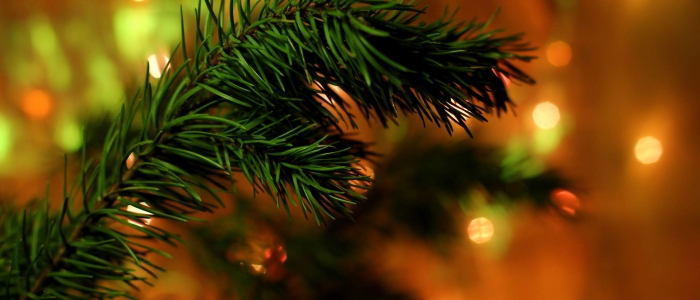Top Tips on Caring for your Christmas Tree
You just can’t beat having a real cut pine, spruce or fir Christmas tree over the winter season. The smell and overall look just can’t be matched by an artificial counterpart. But how do you keep it looking prim and proper for the entire Christmas period?
In this guide, we’ll be giving you some top tips on how to choose the perfect Christmas tree and how to keep it looking fresh and ‘beauty green’ ‘til the New Year.
Choosing the perfect tree
There are a good variety of trees that would be ideal choices for your home at Christmas, but we’ve identified three of the very best you’ll want to take a look at:
- Scotch pine trees have the traditional scent as well as strong branches and will hold onto their needles for a long period of time.
- Balsam fir trees are known to have a stronger scent and stronger branches to hold all your decorations, but will lose their needles more frequently.
- Spruce trees have the desirable shape and also have strong branches.

The drop test
When buying your Christmas tree you must test its freshness. This will ensure you choose the tree that will stay green and last longer. Take hold of one of the branches and pull your hand towards you allowing the branch to pass through your fingers. Most, if not all of the needles should stay on the branch. Lifting up, and then dropping the tree should have the same result. Your tree should have a strong fragrance and should be rich in colour, with strong but bendy branches.
Christmas tree care myths:
- While many believe a Christmas tree that loses its needles is unhealthy and are put-off from purchasing, this is a completely normal occurrence. However, if the colour is faded and the needles easily fall off at a gentle touch, this means it’s excessively dry.
- Drilling a hole in the bottom of your Christmas tree does not improve the amount of water it takes in.
- Don’t cut the trunk into a V-shape or at an angle – again, this does not help with water intake and makes it much harder for it to stay upright in the stand.
- The temperature of water doesn’t matter when watering your Christmas tree.
- Adding bleach, aspirin, fertilizer or other things to the water will not make trees last longer. Tap water is the most consistent method to maintain moisture levels across all species of evergreen trees.

How to care for your tree
Begin by cutting half an inch off the bottom of your tree and putting it straight into a stand with water. You should aim to put the tree in water as soon as it has been cut. If your tree has been cut a week or two prior to purchase, you again need to cut a ‘cookie’ off the bottom and get it straight into water in order to ensure your tree stays fresh as long as possible.
Your stand should hold at least a gallon of water. The key is to make sure the bottom two inches of the trunk is in water, and this needs to be checked daily to ensure your tree is getting sufficiently hydrated. According to the National Christmas Tree Association, there is no need to put anything but plain water in your tree stand. Plain water is all the tree needs to grow healthily and stay fresh.
Christmas trees prefer a cooler temperature. So while you may want to snuggle up next to the fire during the winter months, make sure your tree is well away from any radiators or fires.
And you?
Following these guidelines will guarantee your Christmas tree staying fresh and healthy until the New Year. But if you’ve any other hints or tips that you’ve used in previous years, we’d love to hear from you so get in touch on Twitter.
And if you’re looking for more than just a Christmas tree to tackle this winter, be sure to take a look out our fantastic product range to help you with your next project.
Lastly, all of us here at International Timber would like to wish you a very Merry Christmas and all the best for 2016.


